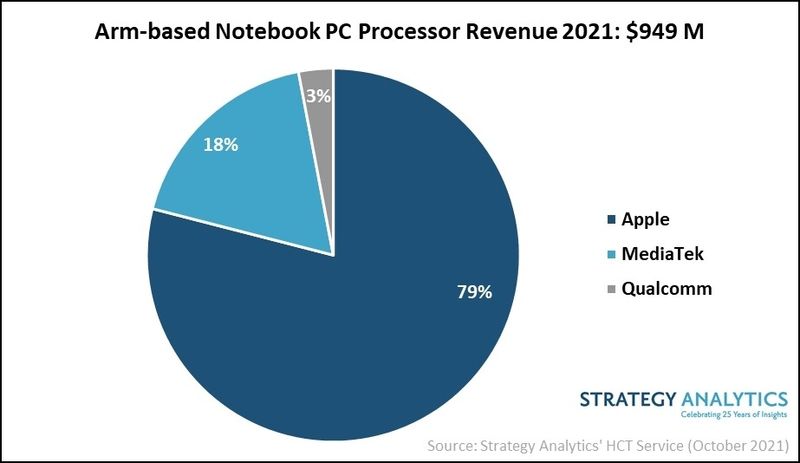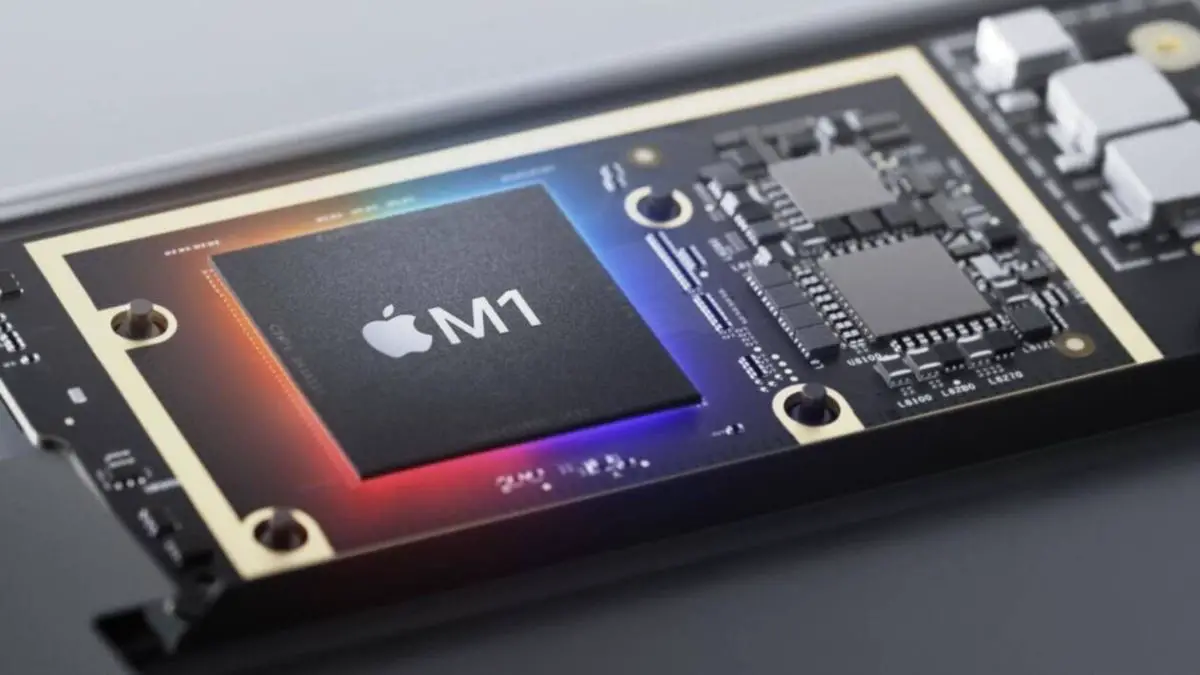The use of ARM-based laptops is increasing at a quick rate. According to the newest statistics, a surge that has seen a strong boost due in part to Apple microchips that have helped Apple establish itself as the market leader with an 80% share in 2021.
A growing market where Apple is in the lead
The firm Strategy Analytics has published data on the market for laptops with ARM processors. A market that is seeing a rapid expansion, multiplying by nine its size in 2020 and close to triple its growth this 2021 to reach 949 million dollars.
In 2021, notebook devices with ARM chips will double in number and makeup 10% of the overall market, according to published statistics. A more than substantial growth from which Apple, MediaTek, and Qualcomm will capture all the revenues.
Apple will be the biggest player in this distribution, capturing up to 80% of the revenue thanks to M1 processors. This leaves MediaTek in second place with 18% of the market and Qualcomm in third place with just 3%.

“Qualcomm, despite its close partnership with Microsoft on the Windows operating system, was unable to make a dent in the notebook market until now. Qualcomm is investing heavily in the computer market with its acquisition of Nuvia, from which we will only see results from 2023 onwards. In the near term, Qualcomm may focus on Chromebooks to capture some of MediaTek’s revenue.”
“Strategy Analytics believes that ARM-based mobile processor vendors will need to step up software investment and branding efforts to compete effectively with x86-based vendors Intel and AMD.”
A market that Apple has entered very strongly
The facts speak for themselves. Since the initial Apple silicon Macs were launched last October, Apple’s market share in ARM processors in notebook computers has exploded. The transition to ARM processors developed by the same firm is still in progress, and we anticipate it will be completed by the end of 2022.
We’ll see the second iteration of the current M1, which will be the chips utilized to bring life to the new 14-inch and 16-inch MacBook Pro, on Monday. With this stage, Apple has completed the shift from consumer-level hardware to more professional segments of its Mac computers, allowing its presence in the ARM sector to rise substantially.
Intel has been having problems, which is driving up the use of ARM processors. By design, ARM processors are more energy-efficient, which is critical in the notebook industry such as the Mac. Although Microsoft is still working on its version of Windows for ARM processors, it’s clear that Apple has quickly taken the lead. This coming Monday, we’ll have additional information about these developments.





